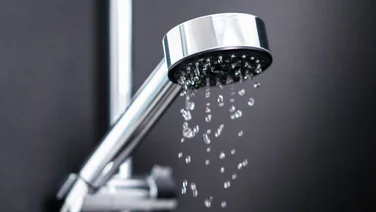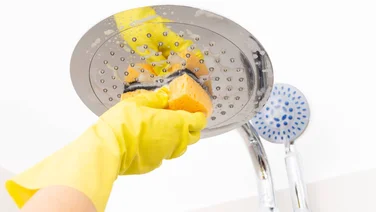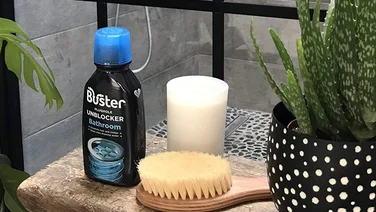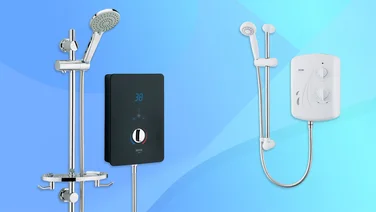To help us provide you with free impartial advice, we may earn a commission if you buy through links on our site. Learn more

Tackling limescale buildup on the toilet is a task people tend to put off, but as we all know, putting this chore on the long finger only makes things more unpleasant down the line. Limescale and discolouration can build up over time, making for some visually unpleasant staining that can be surprisingly difficult to remove.
Read on and our article below will reveal all the information and removal tips you’ll need to get your porcelain sparkling again.
READ NEXT: The best toilet unblocker you can buy
What exactly is limescale?
Limescale is a hard, chalky substance mainly made up of calcium carbonate. It is a common problem in areas with hard water, i.e. water with a high dissolved mineral content. Sixty percent of the UK is considered to have hard water and so limescale is a problem many of us have encountered, commonly finding deposits in and around sinks and taps, kettles, toilets and piping around the house.

Beyond being unsightly and hard to remove, limescale build-up can also impair the operation of heating elements and piping where it forms.
What are some removal methods to avoid?
Before we get our recommended solutions, we’d like to clear up a few limescale myths, which should hopefully save everyone some time in the long run. Commonly touted methods that should be avoided are:
Bleach – While it disinfects, brightens surfaces and removes stains with ease in just about every other situation, this reliable household champ just isn’t the right tool for taking on limescale. Instead of breaking down limescale, bleach, well, just bleaches it. Not only does this not remove the limescale, it also makes it harder to see on porcelain, allowing thicker, nastier build-ups to happen right under your nose.
Coca-Cola – There are as many old wives’ tales about Coca-Cola as there are stars in the sky, one of which states that coke’s acidity is such that leaving it sitting in your toilet overnight will melt away limescale like magic. While someone, somewhere may have some success with this method on a mild limescale build-up, any reports we’ve heard from people trying it relay that it doesn’t do much except sometimes dye the limescale brown, which is very much the opposite of the look you’re going for.
READ NEXT: Our round-up of the best bathroom cleaning products
Solution 1: Get a tough limescale remover
Nowadays there’s a specific product for just about every household task, and limescale removal is no different. A surefire way to tackle limescale is to buy a strongly formulated limescale remover and apply it as the manufacturer suggests. If you’re not sure what product would be most effective, you can check our guide to the best toilet cleaners, which takes a look over a range of products for keeping your toilet clean, stain-free and fresh.

However, if you need a quick fix we can save you some time and tell you right here that our pick for the best toilet descaler was this Professional Limescale Remover from HG.

Beyond that, once you have removed the limescale from your loo it can be worth investing in a cleaning product that works to prevent future limescale build-up, such as a toilet cleaner like Harpic Power Plus or a toilet rim block like Bloo Colour Active.
Solution 2: DIY method
If you’d prefer not to use astringent chemicals, or just want an option that uses items you might already have to hand, we also have a favourite DIY solution for tackling limescale. This method is a simple two-step process:
1. The first step is to pick an acidic substance to soften the limescale so that it can be removed more easily. Acids are particularly good at tackling limescale as it tends to be made up of basic chemicals, like the above mentioned calcium carbonate. The most effective household acid for cleaning, in our experience, is undiluted white vinegar (acetic acid), although others have found success with weaker acids such as lemon juice (citric acid). Whatever acid you choose, it’s best to leave it sit overnight, and it will be most effective if you drain your toilet bowl first.
2. The second step, and we did say this method was simple, is to get scrubbing. If you have a quality toilet brush, that’s a good place to start, and if not, you can check out our round-up of the best brushes available. Other suggestions online range from trying a coarse sponge, to using sandpaper. However, the item we like best, due to its balance of scrubbing power and low likelihood of damaging your toilet, is a pumice stone.
Other DIY methods
Two other much-touted solutions for stubborn limescale are sodium bicarbonate, which should be combined with water in a 3:1 ratio and applied over the limescale as a paste, as well as WD40, which should be applied similarly and left to sit for about 4-5 minutes. Similar to our method delineated above, after both these products have been left to sit, it should be possible to scrub the limescale off with a coarse instrument.







